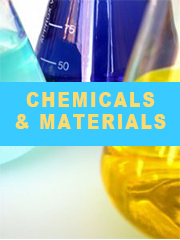Report overview
The Ceramides in Cosmetic industry can be broken down into several segments, Fermentation Ceramide, Plant Extract Ceramide, etc.Ceramides are a family of waxy lipid molecules. A ceramide is composed of sphingosine and a fatty acid.
This report aims to provide a comprehensive presentation of the global market for Ceramides for Cosmetics, with both quantitative and qualitative analysis, to help readers develop business/growth strategies, assess the market competitive situation, analyze their position in the current marketplace, and make informed business decisions regarding Ceramides for Cosmetics. This report contains market size and forecasts of Ceramides for Cosmetics in global, including the following market information:
Global Ceramides for Cosmetics Market Revenue, 2018-2023, 2024-2029, ($ millions)
Global Ceramides for Cosmetics Market Sales, 2018-2023, 2024-2029, (Tons)
Global top five Ceramides for Cosmetics companies in 2022 (%)
The global Ceramides for Cosmetics market was valued at US$ 257.4 million in 2022 and is projected to reach US$ 320 million by 2029, at a CAGR of 3.2% during the forecast period. The influence of COVID-19 and the Russia-Ukraine War were considered while estimating market sizes.
Ceramides in Cosmetics may be found as ingredients of some topical skin medications used to complement treatment for skin conditions such as eczema. They are also used in cosmetic products such as some soaps, shampoos, skin creams, and sunscreens.
The classification of Ceramides in Cosmetic includes Fermentation Ceramides and Plant Extract Ceramides, and the major manufacturers of Fermentation Ceramides are Evonik, Doosan, etc.
Asia-Pacific is the largest consumption place, with a sales market share nearly 40% in 2019. Following Asia-Pacific, Europe is the second largest consumption place with the revenue market share of 35%.
We surveyed the Ceramides for Cosmetics manufacturers, suppliers, distributors and industry experts on this industry, involving the sales, revenue, demand, price change, product type, recent development and plan, industry trends, drivers, challenges, obstacles, and potential risks.
Total Market by Segment:
Global Ceramides for Cosmetics Market, by Type, 2018-2023, 2024-2029 ($ Millions) & (Tons)
Global Ceramides for Cosmetics Market Segment Percentages, by Type, 2022 (%)
Microbial Fermentation
Chemical Synthesis
Plant Extraction
Global Ceramides for Cosmetics Market, by Application, 2018-2023, 2024-2029 ($ Millions) & (Tons)
Global Ceramides for Cosmetics Market Segment Percentages, by Application, 2022 (%)
Skin Care
Makeup Products
Global Ceramides for Cosmetics Market, By Region and Country, 2018-2023, 2024-2029 ($ Millions) & (Tons)
Global Ceramides for Cosmetics Market Segment Percentages, By Region and Country, 2022 (%)
North America
US
Canada
Mexico
Europe
Germany
France
U.K.
Italy
Russia
Nordic Countries
Benelux
Rest of Europe
Asia
China
Japan
South Korea
Southeast Asia
India
Rest of Asia
South America
Brazil
Argentina
Rest of South America
Middle East & Africa
Turkey
Israel
Saudi Arabia
UAE
Rest of Middle East & Africa
Competitor Analysis
The report also provides analysis of leading market participants including:
Key companies Ceramides for Cosmetics revenues in global market, 2018-2023 (Estimated), ($ millions)
Key companies Ceramides for Cosmetics revenues share in global market, 2022 (%)
Key companies Ceramides for Cosmetics sales in global market, 2018-2023 (Estimated), (Tons)
Key companies Ceramides for Cosmetics sales share in global market, 2022 (%)
Further, the report presents profiles of competitors in the market, key players include:
Evonik
Croda
Doosan
Vantage
Toyobo
Macrocare
Unitika
Ashland
Outline of Major Chapters:
Chapter 1: Introduces the definition of Ceramides for Cosmetics, market overview.
Chapter 2: Global Ceramides for Cosmetics market size in revenue and volume.
Chapter 3: Detailed analysis of Ceramides for Cosmetics manufacturers competitive landscape, price, sales and revenue market share, latest development plan, merger, and acquisition information, etc.
Chapter 4: Provides the analysis of various market segments by type, covering the market size and development potential of each market segment, to help readers find the blue ocean market in different market segments.
Chapter 5: Provides the analysis of various market segments by application, covering the market size and development potential of each market segment, to help readers find the blue ocean market in different downstream markets.
Chapter 6: Sales of Ceramides for Cosmetics in regional level and country level. It provides a quantitative analysis of the market size and development potential of each region and its main countries and introduces the market development, future development prospects, market space of each country in the world.
Chapter 7: Provides profiles of key players, introducing the basic situation of the main companies in the market in detail, including product sales, revenue, price, gross margin, product introduction, recent development, etc.
Chapter 8: Global Ceramides for Cosmetics capacity by region & country.
Chapter 9: Introduces the market dynamics, latest developments of the market, the driving factors and restrictive factors of the market, the challenges and risks faced by manufacturers in the industry, and the analysis of relevant policies in the industry.
Chapter 10: Analysis of industrial chain, including the upstream and downstream of the industry.
Chapter 11: The main points and conclusions of the report.
